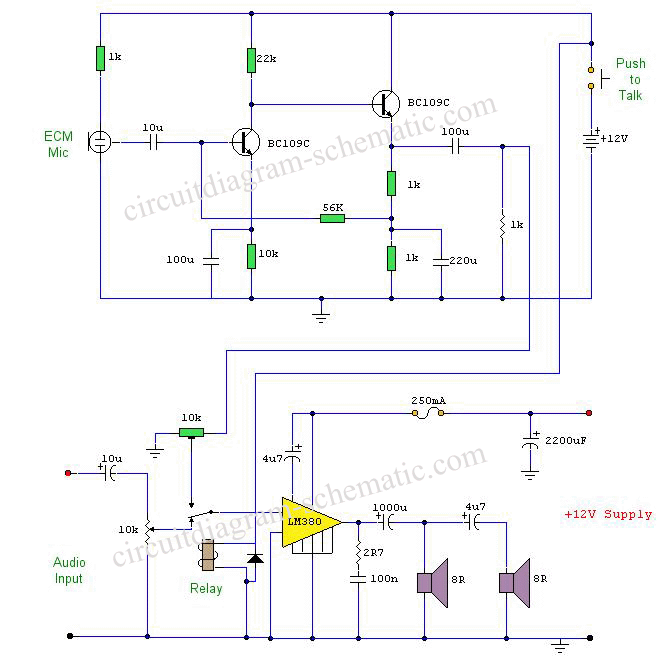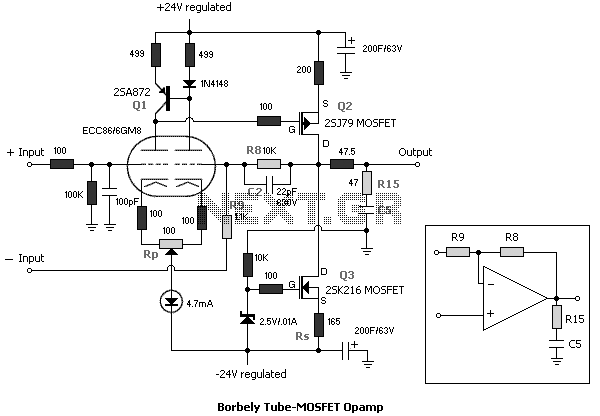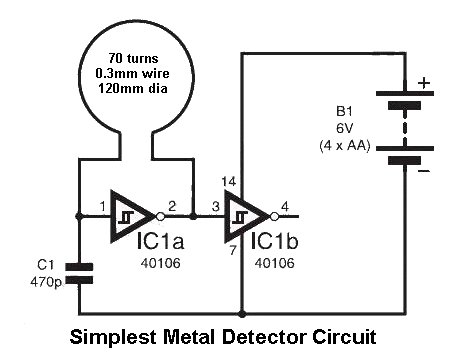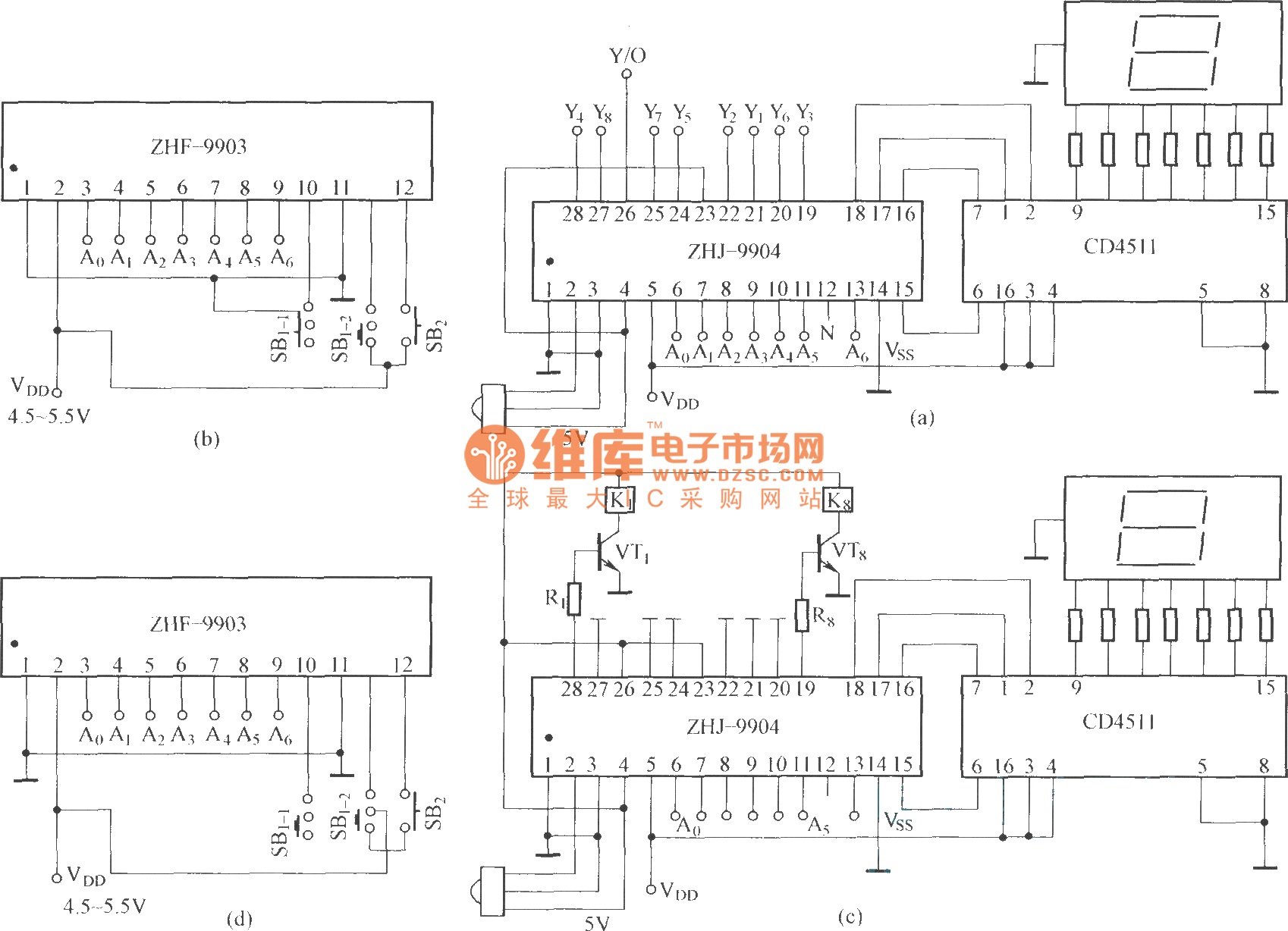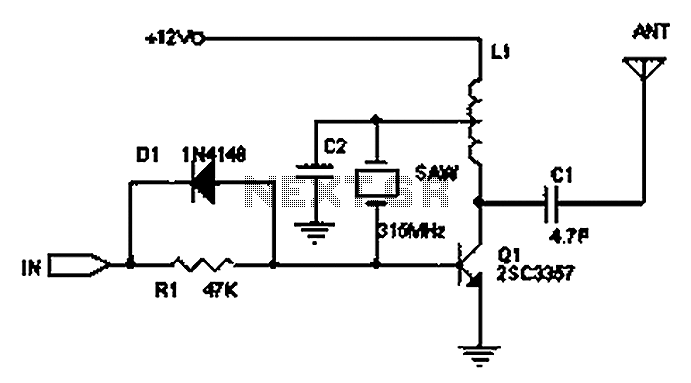
Frequency Modulated FM Oscillator Circuit
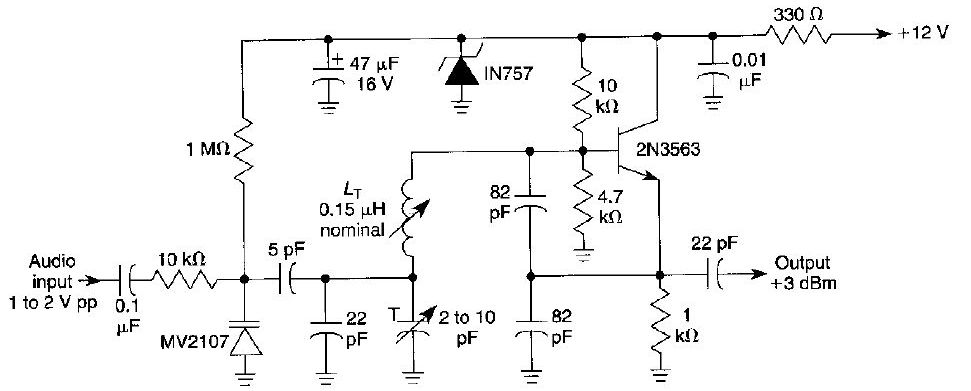
This FM oscillator can be utilized for wireless audio, microphone, and part-15 applications where a stable frequency-modulated oscillator is required.
The FM oscillator is an essential component in various communication systems, particularly in wireless audio transmission and microphone applications. It operates by varying the frequency of the output signal in accordance with the amplitude of the input audio signal, allowing for the transmission of audio information over radio waves.
The circuit typically consists of a voltage-controlled oscillator (VCO) that generates a carrier frequency, which is modulated by the input audio signal. Key components include a transistor or integrated circuit configured to produce the oscillation, along with passive components such as resistors, capacitors, and inductors that determine the frequency range and stability of the oscillator.
In applications where regulatory compliance is required, such as part-15 devices, the oscillator must maintain a stable frequency while minimizing harmonic distortion and ensuring that the output power remains within specified limits. The design may also incorporate feedback mechanisms to enhance stability and performance, ensuring that the FM oscillator can reliably operate under varying conditions.
Additionally, careful consideration of power supply decoupling and grounding techniques is crucial in minimizing noise and interference, which can adversely affect the quality of the transmitted audio signal. Overall, the FM oscillator serves as a vital building block in modern wireless communication systems, enabling efficient and high-quality audio transmission.This FM oscillator can be used for wireless audio, microphone and part-15 applications where stable frequency modulated oscillators is needed. Lt can be va.. 🔗 External reference
The FM oscillator is an essential component in various communication systems, particularly in wireless audio transmission and microphone applications. It operates by varying the frequency of the output signal in accordance with the amplitude of the input audio signal, allowing for the transmission of audio information over radio waves.
The circuit typically consists of a voltage-controlled oscillator (VCO) that generates a carrier frequency, which is modulated by the input audio signal. Key components include a transistor or integrated circuit configured to produce the oscillation, along with passive components such as resistors, capacitors, and inductors that determine the frequency range and stability of the oscillator.
In applications where regulatory compliance is required, such as part-15 devices, the oscillator must maintain a stable frequency while minimizing harmonic distortion and ensuring that the output power remains within specified limits. The design may also incorporate feedback mechanisms to enhance stability and performance, ensuring that the FM oscillator can reliably operate under varying conditions.
Additionally, careful consideration of power supply decoupling and grounding techniques is crucial in minimizing noise and interference, which can adversely affect the quality of the transmitted audio signal. Overall, the FM oscillator serves as a vital building block in modern wireless communication systems, enabling efficient and high-quality audio transmission.This FM oscillator can be used for wireless audio, microphone and part-15 applications where stable frequency modulated oscillators is needed. Lt can be va.. 🔗 External reference
Warning: include(partials/cookie-banner.php): Failed to open stream: Permission denied in /var/www/html/nextgr/view-circuit.php on line 713
Warning: include(): Failed opening 'partials/cookie-banner.php' for inclusion (include_path='.:/usr/share/php') in /var/www/html/nextgr/view-circuit.php on line 713
